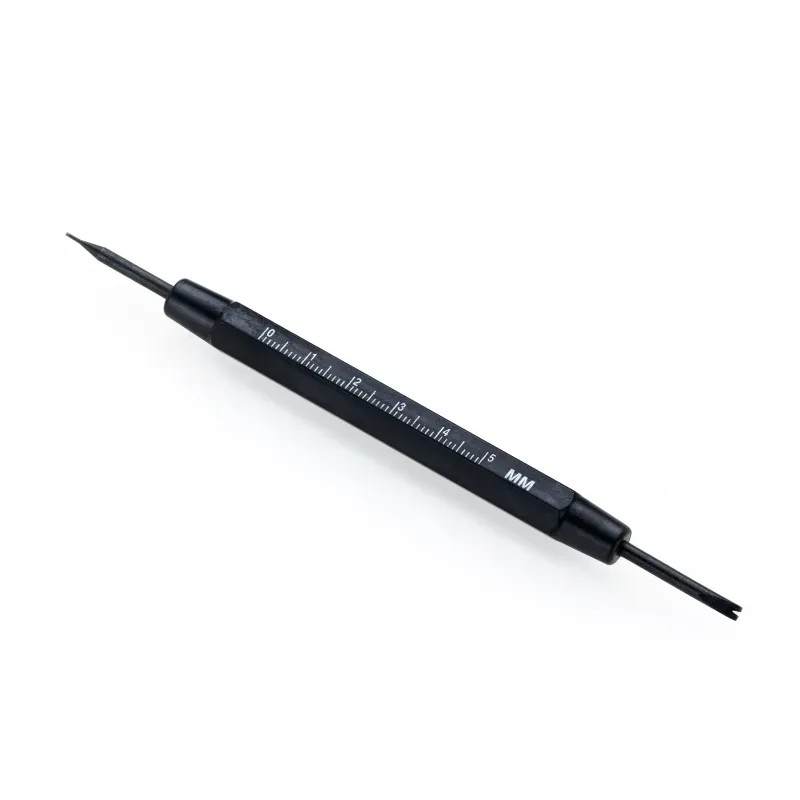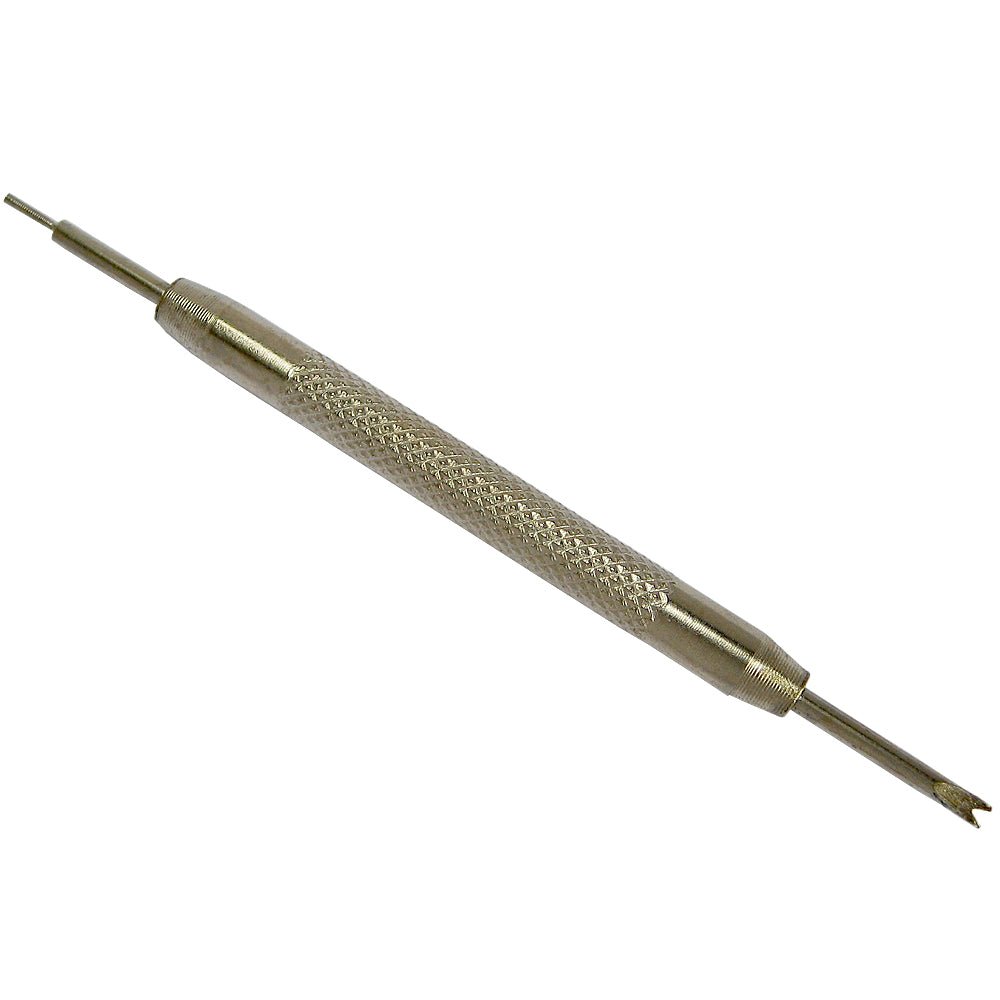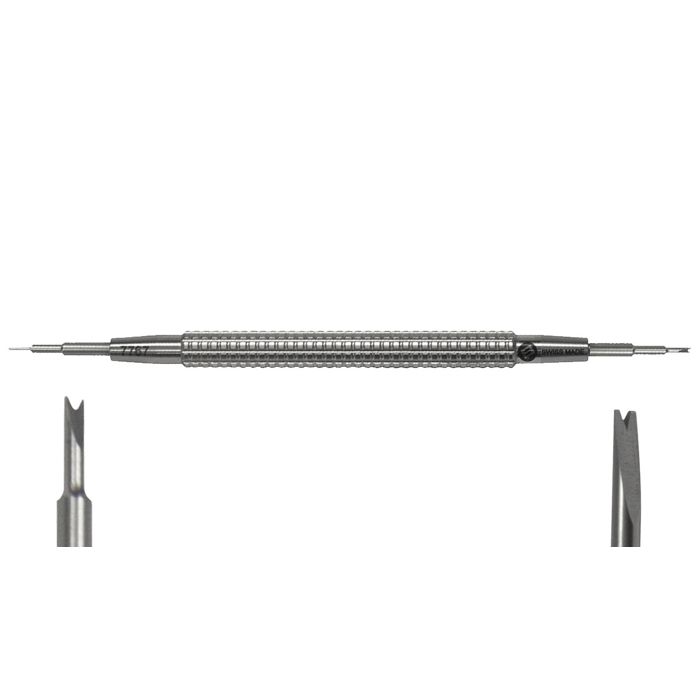Introduction:
Spring bar tools are an essential accessory for any watch enthusiast or collector. These handy tools are used to remove and insert spring bars, which are the small metal pins that hold a watch strap or bracelet in place. In this comprehensive guide, we will explore the different types of spring bar tools, how they work, and tips for using them effectively. Whether you are a novice or seasoned watch aficionado, this article will provide you with everything you need to know about spring bar tools.
Part 1: Understanding Spring Bars
Level 1: What Are Spring Bars?
Spring bars are small, spring-loaded metal pins that are used to secure watch straps or bracelets to the lugs of a watch case. They come in various sizes and can be made of stainless steel, brass, or other materials.
Level 2: How Do Spring Bars Work?
Spring bars have two small spring-loaded ends that can be depressed to fit into the lug holes of the watch case. Once released, the springs hold the watch strap or bracelet in place securely.
Part 2: Types of Spring Bar Tools
Level 1: Basic Spring Bar Tools
Basic spring bar tools consist of a handle with a pointed, forked end that is used to compress the spring bars and remove them from the watch lugs. These tools are simple and straightforward to use.
Level 2: Advanced Spring Bar Tools
Advanced spring bar tools may have additional features, such as interchangeable tips, adjustable pins, or ergonomic handles. These tools are designed for more precise and versatile use.
Part 3: How to Use a Spring Bar Tool
Level 1: Removing Spring Bars
To remove a spring bar, place the forked end of the spring bar tool between the watch strap and the lug. Gently press down on the spring bar to compress it, then carefully pull the strap away from the lug.
Level 2: Inserting Spring Bars
To insert a spring bar, place the forked end of the spring bar tool between the watch strap and the lug. Press down on the spring bar to compress it, then align the spring bar with the lug hole. And release the tool to secure the strap in place.
Part 4: Tips for Using Spring Bar Tools Effectively
Level 1: Use the Right Size
It is essential to use the correct size of spring bar tool for your watch’s lug width. Using the wrong size tool can damage the watch case or the spring bars.
Level 2: Take Your Time
When using a spring bar tool, it is crucial to be patient and take your time. Rushing can lead to accidental scratches or damage to the watch or strap.
Part 5: Maintenance and Care for Spring Bar Tools
Level 1: Cleaning and Lubricating
Periodically clean and lubricate your spring bar tools to ensure smooth operation. Remove any dirt or debris and apply a small amount of lubricant to the moving parts.
Level 2: Storage
Store your spring bar tools in a dry and clean place to prevent rust or corrosion. Keep them in a protective case or pouch to avoid damage.
Part 6: Importance of Quality Spring Bar Tools
When it comes to working with spring bars, having a high-quality spring bar tool becomes essential. A quality spring bar tool is not only durable but also ensures precision and control when removing and inserting spring bars. The tips of the tool should be sharp and precise to easily manipulate the spring bars without causing damage to the watch or watch band.
Additionally, a quality spring bar tool will have a comfortable grip that allows for extended use without causing hand fatigue. The handle should provide a good grip and for ease of use. This is especially important for professionals or hobbyists who frequently work with watch bands and straps.
Moreover, a good spring bar tool is versatile and compatible with various types and sizes of spring bars. It should be able to accommodate different watch band thicknesses and watch case designs. This versatility ensures that the tool can meet a wide range of watch models and styles.
In conclusion, a quality spring bar tool is a crucial investment for anyone who regularly works with watches and watch bands. It will provide precision, control, and versatility, ultimately making the process of removing and inserting spring bars much easier and safer.
Part 7: Types of Spring Bar Tools
There are several different types of spring bar tools available on the market. Each designed to serve a specific purpose or accommodate various preferences. The most common types of spring bar tools include the standard forked end tool, the pointed end tool, and the double-sided forked end tool.
The standard forked end tool features two thin, fork-shaped tips that are used to compress the spring bar ends and release them from the watch lugs. This type of tool is versatile and can be used for most watch bands and straps.
The pointed end tool, on the other hand, features a pointed tip on one end and a forked tip on the other. The pointed tip is used to push spring bars out of the watch lugs. While the forked tip is used to compress and insert spring bars. This type of tool is great for working with watches that have limited space between the lugs.
Finally, the double-sided forked end tool has two forked tips of different sizes on opposite ends of the handle. This allows for versatility in handling different sizes of spring bars and watch bands.
Ultimately, the choice of spring bar tool comes down to personal preference and the specific needs of the user. Each type of tool has its own advantages and may be better suited for different watch bands and watches.
Part 8: Tips for Using a Spring Bar Tool
Using a spring bar tool requires a certain level of skill and knowledge to avoid any damage to the watch or watch band. Here are some tips for using a spring bar tool effectively and safely:
- Choose the right tool for the job – Select a spring bar tool that is suitable for the type of watch band and watch case you are working with.
- Use masking tape – To prevent scratching the watch case or lugs, apply masking tape before using the spring bar tool.
- Hold the watch securely – When removing or inserting spring bars, ensure that the watch is held securely in place to prevent any accidental damage or slipping.
- Work in a well-lit area – Proper lighting is essential to see the spring bars and work with precision.
- Be patient – Take your time and work slowly and carefully to avoid any mishaps or accidents.
By following these tips, you can effectively use a spring bar tool to remove and insert spring bars without causing any damage to your watch or watch band.
Conclusion:
In conclusion, spring bar tools are an indispensable accessory for any watch enthusiast. Understanding the different types of spring bar tools, how to use them effectively. The proper maintenance will ensure that you can confidently work with your watches and watch straps. Whether you are changing straps for fun or performing repairs, it will make the process much smoother and enjoyable. With this guide, you now have all the knowledge and tips to make the most out of your spring bar tool.



